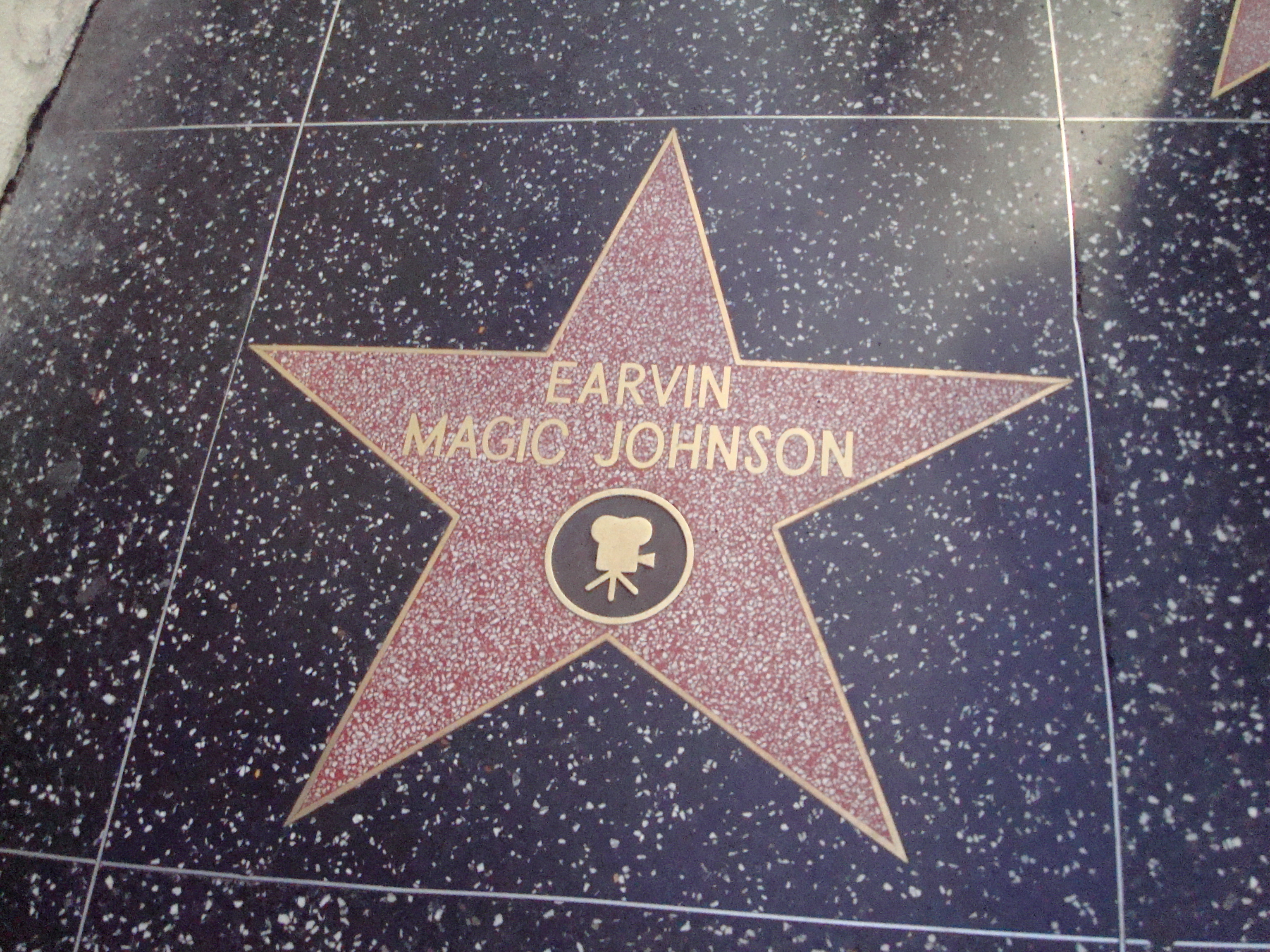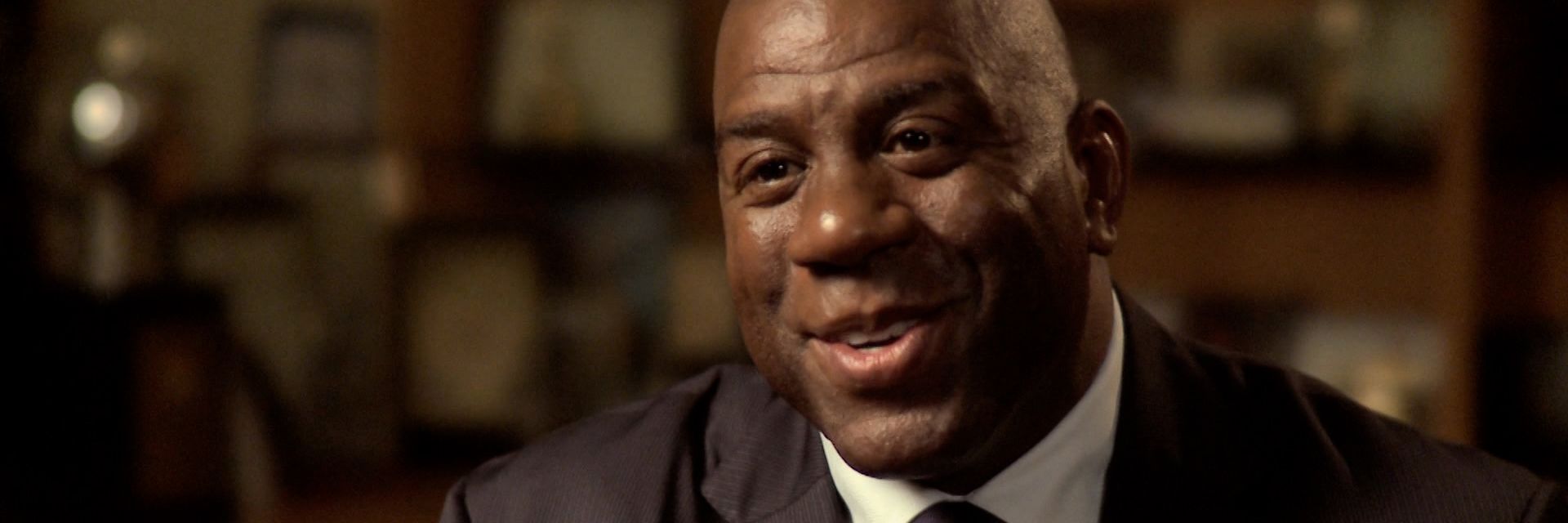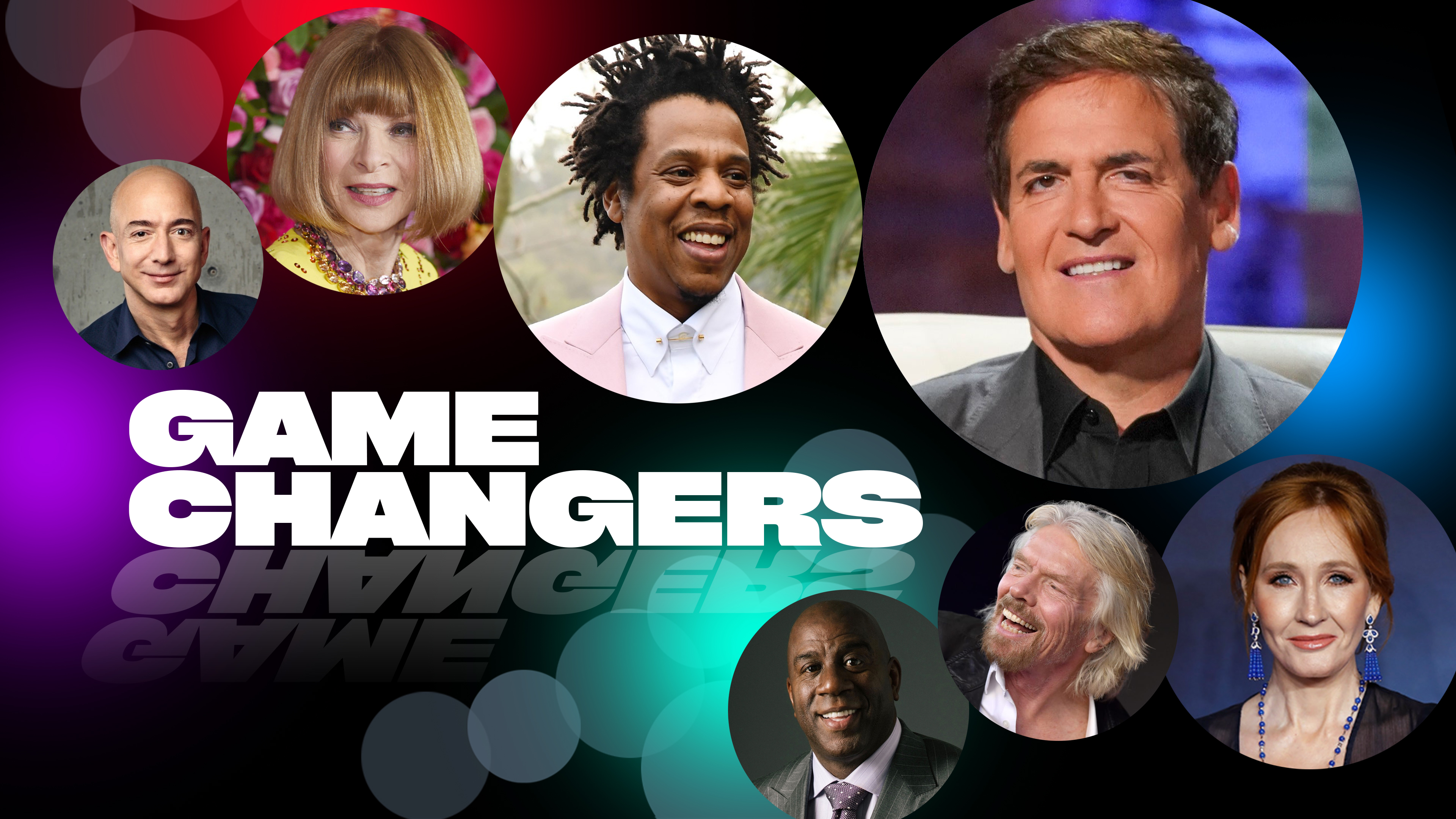Basketball legend Magic Johnson not only survived but thrived with HIV and reinvented himself as a business mogul serving urban communities in Los Angeles and beyond.
◊
For Earvin “Magic” Johnson – and for the world – everything changed in the minutes after 3 p.m. Pacific Time, Thursday, November 7, 1991. At that hour, in the Forum Club at the Great Western Forum (now the Kia Forum) in Inglewood, California, then the home of the Los Angeles Lakers basketball team, Johnson announced to a hushed room of media and associates that he was infected with HIV, the virus that causes AIDS.
I clearly recall that day, and perhaps you do too. He said, “Because of the HIV virus that I have attained, I will have to retire from the Lakers today. . . . I plan on going on, living for a long time. . . . I will now become a spokesman for the HIV virus . . . and I will be a happy man.”
I felt his words shoot through me like a bolt of lightning. I could sense the impact his announcement would have on those who looked up to or identified with Johnson for his sports prowess or celebrity. People who thought their heterosexuality made them “immune” to the virus and its impact might awaken to the dangers of HIV for everyone and take preventive actions. After all, never before had such a well-known public figure, a self-described heterosexual, willingly “come out” as HIV-positive.
To learn much more about Magic Johnson’s transformation from sports superstar to business mogul, take a dive into Game Changers, Episode 5, “Magic Johnson.”
Second Thoughts about ‘The Announcement’
At the same time, as a gay man and AIDS activist living in Los Angeles in that era, I was critical of what he left out. He distinctly separated himself from people living with HIV: “Sometimes we think only gay people can get it . . . and here I am saying that it can happen to anybody, even Magic Johnson.” More importantly, he – through ignorance or choice – did not mention the ongoing crisis of HIV spreading rampantly through the Black community.
In my view, he missed an opportunity to stand with common people, identifying instead with the elite medical establishment, which at the time – five years before Johnson’s HIV specialist, Dr. David Ho, introduced the lifesaving “HIV cocktail” – was not viewed at all favorably by many in the demographic he missed. AIDS activists like myself were mobilized against the medical establishment, which at the time was withholding potentially life-saving experimental therapies.
Not everyone agreed with my perspective. Phill Wilson, who was at that time the City of Los Angeles AIDS coordinator, commended Johnson in a PBS interview: “The importance of Magic’s contribution is that, on the one hand, he has chosen to be an AIDS advocate. On the other hand, and for people living with HIV, I think that he has played an even more important role, and that is the role to say that you can live with this disease.”

Magic Johnson’s star on the Hollywood Walk of Fame (Source: Neelix at English Wikipedia)
His point about Magic’s announcement raising awareness, if not compassion, is a good one. In the weeks after Magic’s HIV status became known, public health clinics were inundated with people seeking information and testing. In New York City, the number of people seeking HIV tests rose by 60 percent. So his presence – his identity as an HIV-positive Black man – had an impact.
But I was concerned about what this world-renowned figure would do with the rest of his life. Would he indeed become a “spokesman for HIV” and preach the gospel of safe sex to at-risk youth? Or would he retreat into relative obscurity, using his status as a multimillionaire to gain access to the best medical information and treatment while doing little to share that advantage with the common people who idolized him?
The Ravaged Black Community of Los Angeles in the 1990s
Johnson’s life following his announcement proved to me – and to the AIDS community – his commitment not only to people living with HIV and AIDS, but to largely overlooked, struggling people living in impoverished communities in Los Angeles and, eventually, elsewhere.
L.A. at that time was a dangerously divided community. Upscale portions of Los Angeles were booming due to the “go-go ’80s.” Meanwhile, the scourge of crack cocaine had ravaged entire neighborhoods, primarily in the Black- and Latino-majority areas in the city’s south. Industry – and the jobs that accompanied them – had fled South Central L.A. all through the 1980s, and residents were bereft of opportunities as well as services. There was not a single grocery store in the entirety of that area, and without a car, which was a luxury for many there, most food options were the corner liquor stores and overpriced “mini-markets” that dotted the area.
South Central in 1991 was a powder keg set off just a few months later, in April 1992, when Black motorist Rodney King, who had been severely beaten by officers of the Los Angeles Police Department, learned – along with all of L.A. – an appalling fact: Even with video evidence of King’s gruesome assault, the officers were found not guilty of using excessive force.
.jpg)
Graffiti on wall in Los Angeles commenting on Rodney King verdict (Source: Ricky Bonilla, via Wikimedia)
Starting in South L.A., famously at the intersection of Florence and Normandie, the city erupted in days of rioting, looting, and violence. People who were used to deprivation, not only of goods and services but also of their rights as citizens, lashed out with arson and weapons ranging from concrete blocks to semiautomatic handguns against targets that symbolized their oppression: White motorists, Asian shop owners, slumlords. Over 60 people died in the rioting, more than 2,000 were wounded, and the property damages added up to a total above $1 billion. Many community activists called it an uprising.
South Central was gutted, and major retailers and real estate investment titans made a hypocritical show of involvement in rebuilding efforts that came to nothing. Here’s where Magic Johnson stepped in.
Stepping Up to Serve South Los Angeles, and Beyond
Johnson saw a way forward in his community by combining his desire to create a business path for himself after his NBA career with what he saw as a pressing need for investment in the Black-majority communities of South L.A. Though he lived in a mansion in tony Bel Air, far from the poor neighborhoods in turmoil, he wanted to have a positive impact on poor communities while simultaneously building an investment portfolio with the ultimate goal, as he had stated, of owning a sports team.
He had already accepted a position on the President’s National Commission on AIDS in early 1992, bringing much-needed media attention to a panel that needed to make a big public impact. It didn’t last long, though. In September of that year, Johnson resigned from the commission with a widely publicized letter to President George H.W. Bush that excoriated the President for “dropping the ball” by actively opposing many of the commission’s recommendations for increasing HIV awareness and fighting AIDS.
“I cannot in good conscience continue to serve on a commission whose important work is so utterly ignored by your Administration, [which] is not doing everything that it must to fight this disease,” Johnson wrote. Johnson then set his sights on doing more community-based work.
Soon after the riots, Magic formed the Johnson Development Corporation to invest in Los Angeles neighborhoods that had been overlooked and neglected by mainstream developers. His first investment partner was Sony Pictures, with which he created a 50-50 partnership agreement to build movie theaters in underserved communities across America, starting, in 1995, in the historically Black L.A. neighborhood of Baldwin Hills.
.jpg)
Entrepreneur and business mogul Magic Johnson standing with reporter, 2022 (Source: Daniel Benavides, via Wikimedia)
Johnson, who then had an estimated net worth of close to $100 million, put up half the money himself. He went on to open five more theaters in urban areas like Atlanta, Houston, Cleveland, and New York City’s Harlem. These ventures offered new jobs for local residents, and were marked by their “no hats, no colors” policy, to make the moviegoing experience safe for customers by excluding those who were affiliated with gangs.
During the construction of the first theater, gang members threatened to shut down the project if they were not given a cut. Magic was called in to try to tamp down the hostility. Through careful negotiations, he succeeded in saving the project by hiring members of the gangs if they agreed not to wear their colors on the job.
The Magic Johnson Theatres were a big success, showing that careful planning with community involvement could create profits as well as loyal customers. The small chain was eventually bought by the much larger AMC Theatres in 2006, though it kept its original name and branding.
Recognizing that success, Starbucks CEO Howard Schultz teamed up with Johnson to open the first Starbucks in South L.A. in 1998. That one, in the Black residential neighborhood of Ladera Heights, led to many more, eventually totaling 125 stores. Johnson also brought restaurants and other retail establishments to the area, opening two malls and partnering with the T.G.I. Friday’s chain, which provided Black customers with the option of dining out in their own neighborhoods.
The Johnson Development Corporation grew into Magic Johnson Enterprises, with a portfolio in excess of $1 billion. In addition to its profit-making partnerships around the U.S., it also supports nonprofits that serve the needs of people of color in underserved communities as well as people living with HIV/AIDS. Johnson also succeeded in his goal of owning a sports team, and is currently a part owner of three clubs in Los Angeles – the Dodgers, the WNBA’s Sparks, and Major League Soccer’s LAFC – as well as the NFL’s Washington Commanders.
I’m happy to be proven wrong about my early misgivings. Magic Johnson followed through like a champ. He stood up to a recalcitrant president of the United States. He directly supported community organizations providing assistance to people with HIV/AIDS. Johnson proved that nothing – not HIV status, skin color, or ethnic background – can hold back someone with a strong vision. And more importantly, he’s shown that a business venture can be more than profit-seeking. It can be a mission.
Ω
Kevin Martin is Senior Writer and Associate Editor for MagellanTV. He writes on various topics, many in the Art and Culture genre. Having had a long career as a journalist and communications specialist, he co-edited the forthcoming book, My Body Is Paper: Uncollected Works of Gil Cuadros. He resides in Glendale, California.


